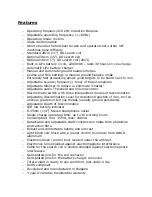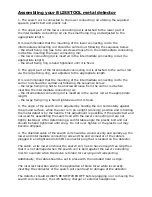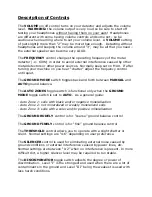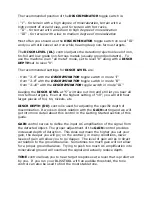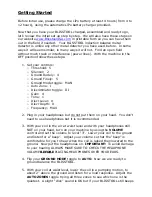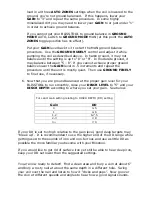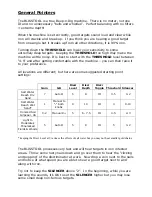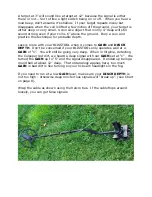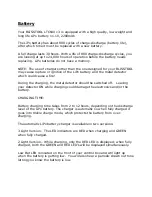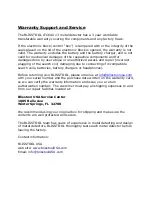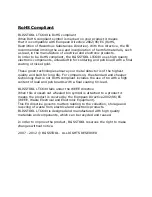
Assembling your BLISSTOOL metal detector
1. The search coil is connected to the lower connecting rod utilizing the supplied
spacers, plastic bolt and plastic nut.
2. The upper part of the lower connecting rod is attached to the lower part of
the intermediate connecting rod via the small fixing ring, and adjusted to the
appropriate length.
It is recommended that the mounting of the lower connecting rod to the
intermediate connecting rod should be carried out following the sequence below:
– the small fixing ring has to be unscrewed loose from the intermediate connecting
rod before inserting the lower connecting rod;
– the lower connecting rod is inserted in the intermediate connecting rod at the
appropriate length;
– the small fixing ring is hand tightened until it is fixed.
2. The upper part of the intermediate connecting rod is attached to the carrier rod
via the large fixing ring, and adjusted to the appropriate length.
It is recommended that the mounting of the intermediate connecting rod to the
carrier rod should be carried out following the sequence below:
– the large fixing ring has to be unscrewed loose from the carrier rod before
inserting the intermediate connecting rod;
– the intermediate connecting rod is inserted in the carrier rod at the appropriate
length;
– the large fixing ring is hand tightened until it is fixed.
3. The angle of the search coil is adjusted by holding the coil horizontally against
the ground surface, while the user is in an upright (working) position and is holding
the metal detector by the handle. This adjustment is possible, if the plastic bolt and
nut used for assembling the search coil with the lower connecting rod are not
tightly fastened. After determining a comfortable angle the plastic bolt and nut
should be hand tightened until snug. Do not over tighten or the plastic nut may
become stripped.
4. The shielded cable of the search coil should be wound evenly and spirally up the
lower and intermediate connecting rods and the end connector of the cable is
plugged in and tightened into COIL connector plug that is located on the detector.
The cable, at its lower end near the search coil, has to have enough free length so
that it is not damaged when the search coil is bent against the lower connecting
rod, for example when the device is folded for carrying and transporting.
Additionally, the cable should be set in place with the included Velcro strips.
The incorrect insertion and/or the application of brute force while incorrectly
inserting the connector of the search coil could lead to damage of the detector.
The detector should ALWAYS BE SWITCHED OFF before plugging in or removing the
search coil connector, the LiPo battery charger or external headphones.



